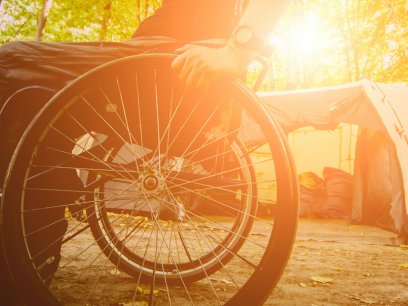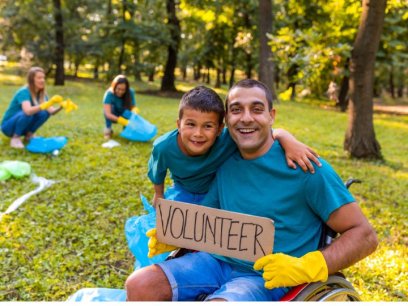
More than 28 million people with disabilities visit national parks each year. Accessibility on public lands is a challenge that parks are working to address by implementing universal design. Simply put, this concept means designing environments that allow for human diversity, social inclusion, and equity for all who wish to use them.
Just as it is important to ensure people of all abilities can safely use trails, sidewalks, and visitor centers, the agencies and non-profits that manage America’s public lands also need to make sure their websites and print materials are accessible to all. A park’s website is often the first place that someone will look for information when planning a trip. Inaccessible web content means that people with disabilities are denied equal access to information, which ultimately could discourage them from visiting the park.
Poorly designed websites and printed materials can create unnecessary barriers for people with disabilities, just as poorly designed buildings prevent some people from entering. Access problems often occur because website designers mistakenly assume that everyone sees and accesses a web page in the same way.
However, people with disabilities navigate the web in a variety of ways. People with visual impairments may use screen readers; people who are deaf or hard of hearing may use closed captions; people who are unable to use a mouse may use voice recognition software to control their computers. Accessible website design recognizes these differences and does not require people to see, hear, or use a standard mouse in order to access the information and services provided.
Check Your Website’s Accessibility
Park and public lands agency staff should review their websites to ensure that the content is accessible to people with a wide range of abilities, disabilities, ethnic backgrounds, language skills, and learning styles. This review should consider things like including alternative text, captions, transcripts, and color contrasts that work for everyone.
The Web Content Accessibility Guidelines (WCAG) outline the key components of accessible design that your web designer should keep in mind. The WCAG standards are categorized based on four main principles:
Perceivable
- Information must be presented in a way that users can perceive it using one of their senses.
Operable
- Users must be able to interact with the components of the page, such as navigation features and the user interface.
Understandable
- Users must be able to understand the information as well as understand how to operate within the user interface.
Robust
- Website content must be robust enough that it can be interpreted by a wide variety of assistive technologies.
Design Challenges and Solutions That Improve Accessibility
Below are four examples of solutions to common accessibility issues on websites or printed materials.
Situation #1: Sharing images on a website without a text caption.
Challenge
People with visual impairments or other disabilities that affect their ability to interpret a computer display often use different technologies so they can access the information displayed on a webpage. Images without text cannot be translated into speech or Braille.
Solution
Add a simple line of HTML code on your website to provide “alt text” for each image and graphic. Proper alt text should be more than a description; it should provide a text equivalent of the image.
Situation #2: Posting documents on a website as PDF only.
Challenge
PDF documents, or those in other image-based formats, are often not accessible to people who use screen readers, text enlargement programs, or different color and font settings to read computer displays.
Solution
Always provide documents in an alternative text-based format, such as HTML or RTF (Rich Text Format), in addition to PDF. Text-based formats are the most compatible with assistive technologies.
Situation #3: Specifying the colors and font sizes on a website.
Challenge
Many people with low vision do not see web pages the same as other people and need to use specific color and font settings when they access the internet. However, some web pages are designed so that changing the color and font settings is impossible.
Solution
Websites should be designed so they can be viewed with the color and font size set by users’ web browsers and operating systems. Users with low vision must be able to specify the text and background colors as well as the font sizes needed to see webpage content.
Situation #4: Videos and other multimedia lack accessible features.
Challenge
Videos, slideshows, and virtual tours can present challenges for people with visual and auditory impairments. They may have difficulty in seeing or hearing the information displayed in this format.
Solution
Provide audio descriptions of images (including changes in setting, gestures, and other details) to make videos accessible to people who are blind or have low vision. Provide text captions synchronized with the images to make videos and audio tracks accessible to people who are deaf or hard of hearing.
Visit ADA.gov to review additional examples of common accessibility challenges and solutions.
Learn More About How to Increase Accessibility on Public Lands
America's public lands are for everyone regardless of age or ability level. But there is still much work to be done to ensure that parks are truly accessible to all.
NEEF developed a series Public Lands Engagement Guides in partnership with the National Park Service and the US Forest Service that include strategies for planning and executing successful environmental education outreach on public lands. The “Focus on Accessibility Guide” helps land managers, park professionals, non-profits, and other groups improve park access on public lands, including by making websites and print materials more accessible.
Learn more about how you can register to receive your free copies of NEEF’s Public Lands Engagement guides by visiting this page.


